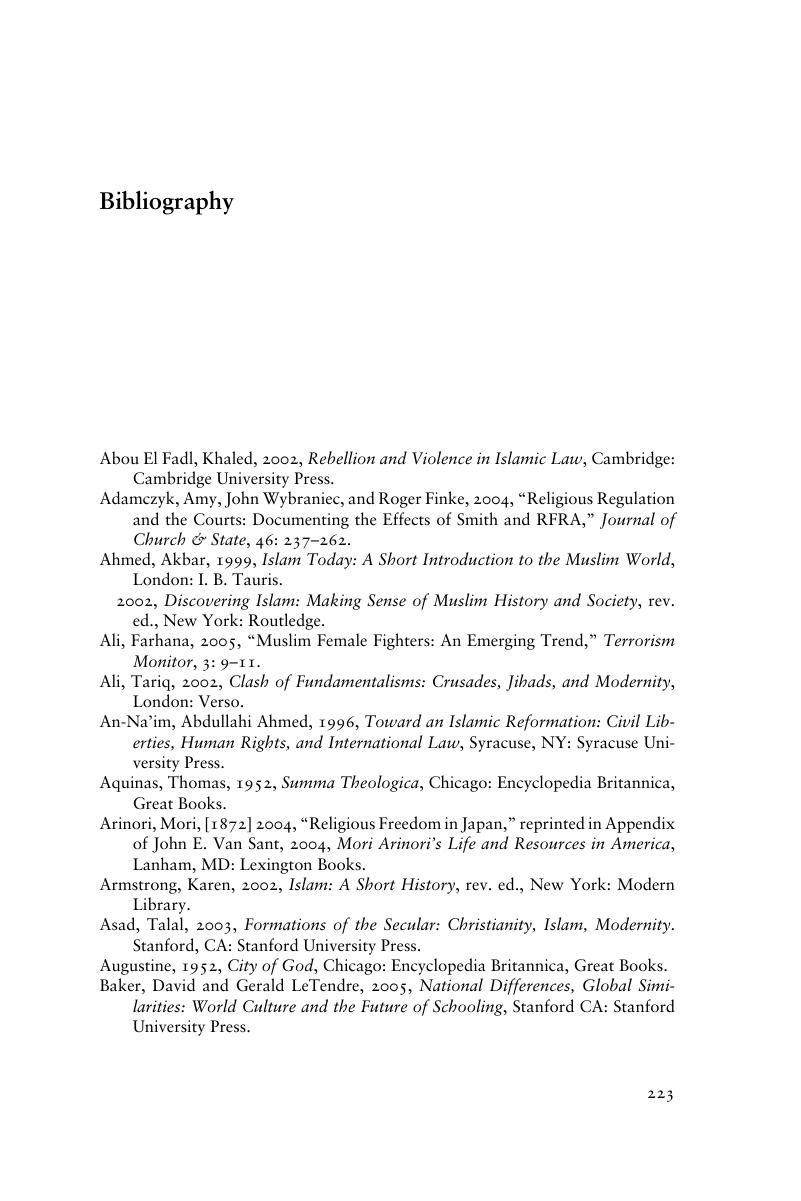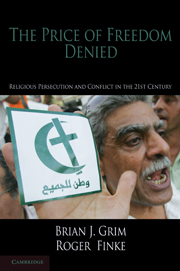Book contents
- Frontmatter
- Contents
- Preface:Religions' Shared Experience of Religious Persecution and Conflict
- 1 Religious Persecution
- 2 Religious Freedom
- 3 Persecution
- 4 Case Studies
- 5 A Closer Look
- 6 What about Muslim-Majority Countries?
- 7 Do Religious Freedoms Really Matter?
- Appendix Testing the Competing Arguments
- Bibliography
- Index
- References
Bibliography
Published online by Cambridge University Press: 05 June 2012
- Frontmatter
- Contents
- Preface:Religions' Shared Experience of Religious Persecution and Conflict
- 1 Religious Persecution
- 2 Religious Freedom
- 3 Persecution
- 4 Case Studies
- 5 A Closer Look
- 6 What about Muslim-Majority Countries?
- 7 Do Religious Freedoms Really Matter?
- Appendix Testing the Competing Arguments
- Bibliography
- Index
- References
Summary

- Type
- Chapter
- Information
- The Price of Freedom DeniedReligious Persecution and Conflict in the Twenty-First Century, pp. 223 - 238Publisher: Cambridge University PressPrint publication year: 2010



